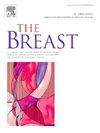Interhospital variation in surgical treatment of screen-detected breast cancer in the South of the Netherlands
IF 5.7
2区 医学
Q1 OBSTETRICS & GYNECOLOGY
引用次数: 0
Abstract
Background
The effectiveness of the Dutch breast cancer screening programme depends on the quality of the full trajectory, from the first screening to the final treatment of a screen-detected breast cancer. Interhospital variation in breast cancer treatment has been explored by several studies, however, not specifically in a screen-detected breast cancer population. The current study compares the treatment strategies of women with screen-detected breast cancer between hospitals in the South of the Netherlands.
Methods
A total of 1450 women with screen-detected breast cancer, who participated in the Dutch screening programme between January 2009 and July 2019, were included in this retrospective analysis of a prospectively obtained database. Breast cancer treatment (i.e. preoperative MRI, neoadjuvant systemic therapy and type and outcomes of surgery) was compared between hospitals using multivariate analysis.
Results
Statistically significant interhospital variation was observed in the use of preoperative MRI (range 20.8–35.8 %, p < 0.001), neoadjuvant systemic therapy (range 4.0–13.3 %, p < 0.001) and breast conserving surgery (range 70.0–87.1 %, p < 0.001). These differences persisted after adjustment for case-mix. In patients with invasive breast cancer treated by breast conserving surgery, the mean volume of the resection specimen ranged from 381 to 541 ml between hospitals (p < 0.001). However, this was not accompanied by significant differences in the percentage of patients with positive resection margins (range 2.9–5.7 %, p = 0.34).
Conclusions
We observed significant interhospital variation in the management of women with screen-detected breast cancer. Quality assurance in screen-detected breast cancer may reduce these differences, but evolving breast cancer care and more personalised approaches should be accounted for.
求助全文
约1分钟内获得全文
求助全文
来源期刊

Breast
医学-妇产科学
CiteScore
8.70
自引率
2.60%
发文量
165
审稿时长
59 days
期刊介绍:
The Breast is an international, multidisciplinary journal for researchers and clinicians, which focuses on translational and clinical research for the advancement of breast cancer prevention, diagnosis and treatment of all stages.
 求助内容:
求助内容: 应助结果提醒方式:
应助结果提醒方式:


